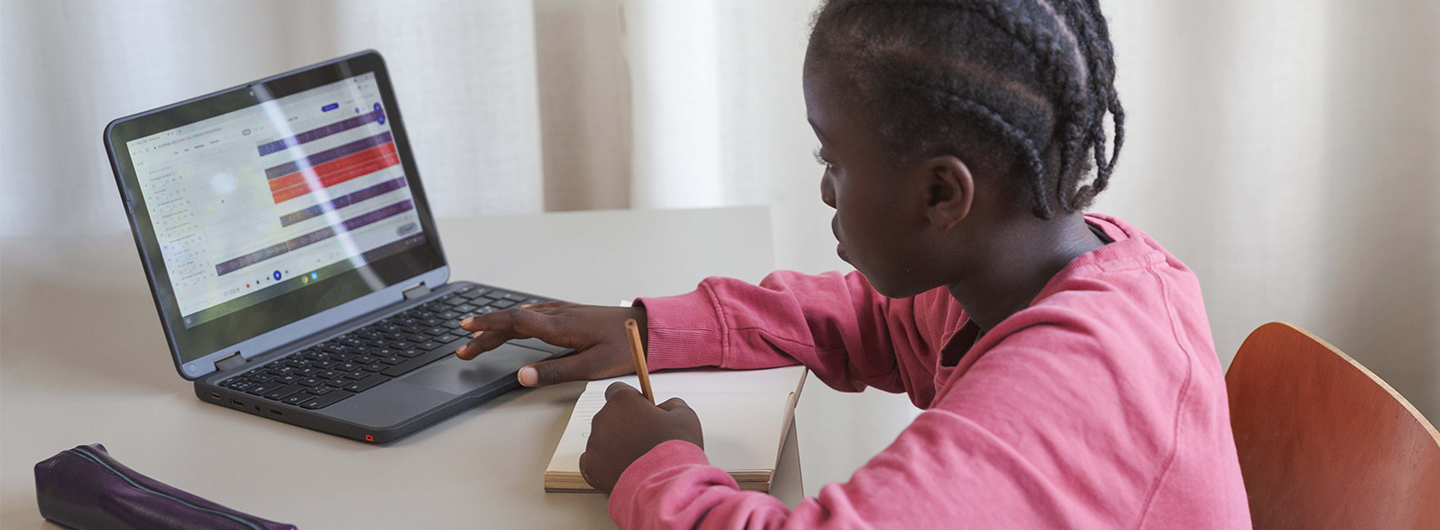
Utilizing Soundtrap for Education in Project-Based Learning
December 9, 2022Let’s face it, even the most dedicated students can get bored and disengaged with traditional teaching methods when everything today is so tech-focused. Passively memorizing facts and reciting them is excellent for introducing new concepts or reviewing information. However, it’s essential to put these concepts into practice with project-based learning to foster an in-depth level of understanding.
If you want your students to thrive in the real world, they need to develop fundamental reading and writing skills while also mastering information synthesis, time management, and research. We know this sounds like a lot at first, but with today’s EdTech tools, it’s easier than ever for students to cultivate these skills while working on a single project!
If you’re ready to improve your teaching methods and engage your students, we’ll show you how easy it is to reap the benefits of project-based learning with Soundtrap for Education!
What Is Project-Based Learning?
Project-based learning is an educational approach designed to teach students with hands-on, engaging projects that resemble challenges they may face in the real world.
In contrast, traditional, lecture-based learning requires students to observe information presented to them, take notes, and demonstrate their understanding of this information by successfully completing a test or homework assignment.
The Benefits of Project-Based Learning
Think of it this way: when you complete weekend chores, prepare a presentation for work or even organize a party with friends, you’re actually completing a project. These real-world examples demonstrate the essence of a project, which is taking information from multiple sources to produce a satisfying result. In most cases, these projects also require the assistance and cooperation of others.
When you encourage your students to have their own authentic experiences, you’re preparing them for the real world in the best way possible. Project-based learning teaches students how to tap into their creativity while breaking down complex problems and creating viable solutions.
Increases In-Depth Understanding
Project-based learning presents an opportunity for students to sharpen their research skills and apply their newfound knowledge to a real-world project, demonstrating their profound understanding of the subject matter. In this way, project-based learning urges students to expand their comprehension of complex concepts far beyond rote memorization.
As students examine multiple sources of information on a deeper level, they must learn how to consider issues through a critical thinking lens and unearth solutions to craft a compelling perspective. Moreover, project-based learning allows students to consider their peers’ points of view, improving their understanding of the subject.
Encourages Collaboration
In the classroom, the highest achievers are typically the most vocal students. They are generally competitive and try to be the first person to answer questions correctly. While there is nothing inherently wrong with these traits, their competitive nature can hinder the group’s ability to collaborate.
However, in group projects during which everyone must contribute to the same project equally, students can experience the joy of teamwork for themselves. With collaboration, students can share each other’s success, creating a foundation for long-lasting relationships while demonstrating how students can use their strengths to compensate for their weaknesses and create something great.
Develops Self-Confidence and Creativity
When students work together to complete a project, they need to apply creative thinking skills to see the project from a different perspective and consider other people’s points of view. Furthermore, project-based learning imbues students with a sense of agency and brings life to learning materials they may not otherwise find interesting.
As students become confident in their ability to contribute to a group and collaborate with others, they become more prepared for challenges they may face in the workplace as adults.
How to Use Soundtrap for Education for Project-Based Learning
It will take a little more than glitter-glue poster boards to keep today’s tech-savvy students engaged! Some educators need help transitioning to more modern teaching strategies, but we made sure that EdTech is easy to follow for teachers and students alike.
About 39% of Gen Z states that they mostly listen to podcasts. Why not show them how easy it is to create their own? Starting a podcast is an engaging way to explore new learning materials and imbue students with valuable life skills they can apply to the real world. Here’s how your students can express themselves with Soundtrap for Storytellers!
Creating a Podcast in Soundtrap
If you’re unsure how to start with Soundtrap for Education, we’ll show you how easy it is to begin building. Soundtrap is made for students of all ages and skill levels to create, collaborate and connect. And since Soundtrap is cloud-based, students can access their projects from any WiFi-connected device with their unique login credentials.
Creating podcasts is an engaging way to bring project-based learning into the modern classroom. Your students can easily create their podcasts with these simple steps:
- Login to Soundtrap, and click Enter the Studio.
- Next, select “Podcast” to open a ready-made podcasting template.
- On the control panel in the left-hand corner, select Add New Track. Then, click Voice & Microphones. You can upload vocals directly into the Soundtrap Studio with the Start Recording button.
- Now, you should see your Mic appear in the control panel. Select the “R” near the Mic icon to enable the built-in microphone on your computer or mobile device.
- Lastly, click the red circle at the bottom of the screen to record your voice.
If you want to add in loops and sound effects, click the purple music note icon in the right corner. From there, drag the loop to the control panel.
See, it’s so much easier than you could have imagined! Next, we’ll show you how students can create podcasts independently through our Book Chat Podcast activity.
The Book Chat Podcast
In this engaging, project-based lesson plan, students will define and express their interpretation of a particular text, whether a book, article, or newsletter. Then, they’ll create a podcast expressing their opinion on the book to spark a dynamic, engaging discussion about the text.
With Soundtrap for Storytellers, you can easily bring the most important components of project-based learning to your classroom. Our fun Book Chat Podcast stimulates curiosity and reflection and allows students to develop their unique voices in a safe space. The best part is that you can use our Book Chat Podcast lesson for subjects. It doesn’t matter whether it’s science, language arts, foreign language, or more. Here’s how your class can get started!
Let Students Analyze the Text
It’s time to jump in and begin engaging discussions with a book chat podcast! Come together with your class and read a short fiction book or passage. As students read this particular text, they’ll write down any key points they might want to discuss with their classmates. For instance, students might discuss specific plot points or how their favorite characters evolve throughout the story. Students might sometimes discuss specific elements, such as the plot, theme, or setting.
Once reading and note-taking are complete, get the creative juices flowing with a class discussion. Ask students what they liked or disliked about certain characters. Additionally, ask about the author’s stylistic choices, or the text’s meaning. This introductory activity will prime students for their project.
Now, Students Can Get Creative in Soundtrap!
Project-based learning encourages students to collaborate and create with one another, This is the perfect time to divide your class into small groups. You can divide students into pairs if your class is smaller.
Now that each student has an assigned group or partner, designate the project within the Soundtrap Studio. Make sure you add yourself as a collaborator to offer guidance whenever students need a helping hand.
Students can follow the simple steps above to create their podcasts. Let students tap into their creative power and say what’s on their minds! Students can experiment with fun sound effects to create podcasts that are informative, funny, or even a little dramatic.
Once the projects are complete, consider allowing students to share their creations with the class. Sharing creations is a great way for students to expand upon the benefits of project-based learning. Here, they’ll be able to discuss different viewpoints as a class.
Encourage Hands-On Learning with Soundtrap for Education
Collaborating, creating, and mastering audio becomes exciting with the right EdTech tools. If your students are ready for limitless creativity and authentic expression, bring the power of podcasting to your classroom for a learning experience unlike any other.
Soundtrap for Education is the ultimate audio production platform for students and teachers to create and edit audio recordings. Pupils and educators can easily tap into their artistic side with this intuitive audio platform. Together, they can develop a creative learning environment for every subject, regardless of the student’s age or experience level.
With Soundtrap for Education, students and teachers can collaborate with advanced cloud technology at any time or place. In addition, the platform comes equipped with a robust resource portal. The resource portal is packed with tutorials, an external curriculum, and lesson plans to complete the educational experience. To ensure privacy, teachers can ensure that student collaboration is safe and secure with invite-only groups in Soundtrap’s versatile digital environment.
If you’re ready to enhance your educational experience with an intuitive cloud-based audio production platform, get started today with Soundtrap for Education! Share this article with other teachers in your network to help spread the joy of learning through sound.
 EDU Portal
EDU Portal


